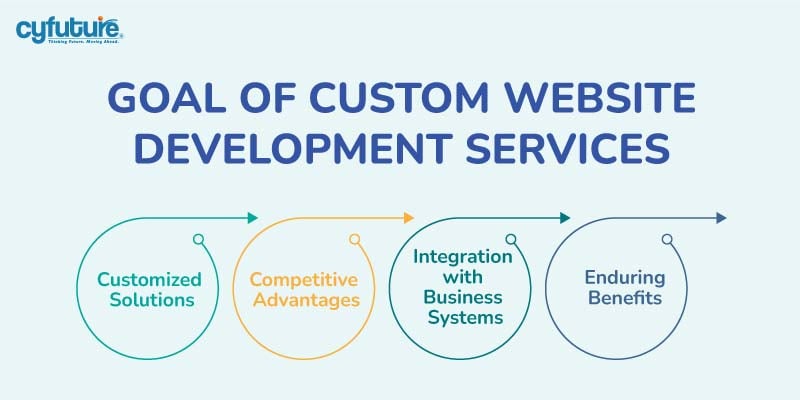-
Get Cloud GPU Server - Register Now!
Toggle navigation

Businesses these days are eager to stay ahead of the competition, therefore they give IT outsourcing more weight. By 2030, the global IT outsourcing market is expected to increase at an annual rate of 11%, reaching USD 512.5 billion.
Design is the cornerstone of each brand. It conveys your message, brings your ideas to life, and increases client confidence. Furthermore, there have been significant advancements in the field of web design and development in the past ten years. The need for well-designed, functional, and aesthetically pleasing websites has grown as businesses work to establish a strong online presence.
However, businesses have to make a crucial choice in response to rising demand: should they hire in-house design teams or contract out website design work?
Well, some businesses choose to hire in-house designers even though not everyone can afford it as it’s necessary to remain competitive in their industries. However, when it comes to outsourcing website design services, many organizations may find that it is not the ideal choice to employ a full-time in-house design staff to handle these jobs.
In this article piece, we will look at the logic behind this choice, specifically focusing on whether outsourced website design services are increasingly taking the place of in-house design teams or not.
However, let’s take a look into a few stats and data before delving deep.
Now, let’s come to the logic behind whether to outsource website design services or not. So, let’s delve deep into the knowledge pool!

Well, here I have mentioned the top 5 factors that you need to consider while making a strategic decision on whether to outsource website design services or not.
Getting all the information you need is essential before making any major decisions. This entails evaluating market trends, investigating competitors, and ascertaining the needs and preferences of customers.
Never hesitate to get in touch with mentors, advisors, or industry professionals who are authorities in the area you are evaluating. Their expertise can help you avoid common blunders and offer insightful recommendations.
Before implementing your ideas or methods fully, if at all possible, test them out on a smaller scale. This enables you to assess their effectiveness and make any necessary adjustments before investing significant money.
Accessibility and availability are other crucial factors. Teams working internally might be available at any time. On the other hand, if you regularly receive new, time-consuming projects like creating an app, hiring outside help could be helpful.
You may just decide what kind of design team your company needs based on your process and frequency.
Errors happen, even with meticulous preparation and a thorough investigation. It’s important to get beyond mistakes and move forward by taking lessons from them when they do happen. Examine the mistakes that were made, note any lessons that can be applied, and use the knowledge to help you make better decisions going forward.
Cost efficiency is a major factor in outsourcing website design services. It might be expensive to keep an internal design team going. It adds up to pay, benefits, software licensing, and training. On the other hand, outsourcing allows companies to pay for design services only when needed. The pay-as-you-go model is especially convenient for small and medium-sized enterprises (SMEs) that do not have the funds to keep a full-time design team on staff.
Through outsourcing, businesses may access a global talent pool. International freelancers and design firms offer a wide range of skills and expertise. Professionals are available to deliver excellent outcomes, regardless of the scale of the project—from a simple website redesign to a complex web application development. Especially in smaller organizations, it is sometimes impossible to match this level of specialization with an internal team.
Businesses that contract out their website design work can concentrate on their core competencies. This is particularly crucial for businesses that don’t focus on web development or design. By outsourcing, they may concentrate on their areas of expertise, like sales, customer support, or product development, and leave the design work to the experts.
Compared to internal teams, outsourcing offers more scalability and flexibility. Based on project criteria, businesses may easily scale up or down their design needs. This is particularly helpful for companies that deal with demand fluctuations throughout certain seasons or for those pursuing short-term projects.

Services for developing custom websites play a significant role in the outsourcing movement. These services offer tailored solutions that take into account the unique needs of a business. Custom websites, in contrast to template-based designs, are made from the ground up, guaranteeing that every element of the site complies with the company’s goals and brand identity.
You might obtain a competitive edge with the use of a personalized website. It encourages originality and creativity, which makes businesses stand out in a crowded field. A more customized user experience can be achieved by including special features and functionalities that are unavailable in standard designs on custom websites.
Improved integration with existing company systems is another benefit of using custom website development services. Whether they link with other software or a customer relationship management (CRM) or enterprise resource planning (ERP) system, bespoke solutions may guarantee improved efficiency and seamless operations.
Custom websites often yield long-term benefits, even if they may require a higher upfront investment. There’s less of a need for frequent redesigns since they adapt better to changes in technology and business. One may save money in the long run by using custom websites, as they are simpler to update and maintain.
One area where outsourcing is having a significant impact is web application development. Web applications are becoming more and more necessary as businesses want to give users more dynamic and engaging experiences. Businesses that outsource web application development have access to cutting-edge expertise and technology that would not be available internally.
Because they offer features not found on traditional websites, web applications enhance user experience. Enhancing user engagement may be achieved through interactive dashboards, personalized content, and real-time data updates. By outsourcing these services, businesses can be sure they will have access to the newest tools and technologies available for creating web applications.
You might be able to reach the market more quickly if you outsource web application development. Skilled development teams can quickly realize an idea, which enables businesses to take advantage of new opportunities more quickly. In the rapidly evolving digital economy, being the first may give you a significant competitive edge, thus speed is crucial.
It can be challenging and time-consuming to develop web apps internally. By assigning work to specialized teams, outsourcing reduces complexity. These groups have developed protocols and methods for efficient project administration and completion.
Although outsourcing offers many benefits, it also has certain disadvantages. A top focus is quality control. Vigilant hiring and ongoing oversight are necessary to guarantee that the outsourced workers meet the requirements and expectations of the organization. Extensive project specifications and well-defined communication channels are necessary to mitigate this risk.
Because outsourcing involves sharing confidential data with other parties, concerns about data security and intellectual property (IP) arise. Businesses need to ensure that the outsourcing partners they work with adhere to strict security guidelines and relevant laws. Non-disclosure agreements (NDAs) and legal agreements may provide further protection.
Working with outsourced teams from various cultures and time zones can be difficult. Communication styles, workplace norms, and time zones may all have an impact on cooperation and project schedules. To address these variances, businesses must develop efficient communication techniques and may need to change their working hours.
Relying on external partners for crucial design and development work can lead to dependencies that reduce a company’s flexibility. If the outsourcing partner has difficulties such as resource shortages or financial instability, the company’s projects may suffer. Diversifying outsourcing partners and keeping some in-house knowledge can help to reduce this risk.

Instead of eliminating in-house design teams, several companies are taking a hybrid approach. This approach combines the skills of teams that are internally and outside-supplied. Teams that are housed are capable of managing essential design tasks, quality control, and strategy planning, while teams that are outsourced focus on certain tasks that call for specialized skills.
Internal design teams are concentrating more and more on strategic objectives. Internal teams may enhance the efforts of external partners by concentrating on domains like innovation, user experience strategy, and brand building, where they can offer the most benefit. The alignment of the company’s design ambitions with its long-term goals is ensured by this strategic emphasis.
Developing internal knowledge is still crucial, even when outsourcing provides access to outside experts. To improve the abilities of their internal personnel, businesses are investing in training and development programs. The organization will be less dependent on outside partners thanks to this investment, which guarantees the retention of vital expertise and skills.
Success depends on the efficient integration and cooperation of in-house and external teams. To improve communication and project management, businesses are utilizing platforms and technologies for collaboration. Companies can guarantee that teams, whether internal or external, collaborate effectively to achieve shared goals by cultivating a collaborative culture.
Organizations are changing how they manage their online presence by outsourcing website design services. Businesses are turning more and more to outsourced services for their scalability, specialist expertise, and cost savings, with the global IT outsourcing market predicted to reach USD 512.5 billion by 2030. Companies that outsource may concentrate on their core competencies and call for highly skilled creative workers only when needed.
To provide a business with a competitive edge and long-term benefits, custom website development services provide tailored solutions that are perfectly in line with its objectives. Web application development services, on the other hand, employ state-of-the-art talent and technology to improve user experience and shorten time to market.
Outsourcing offers many benefits, but it also requires strict supervision over quality, data security, and cultural differences. To balance strategic emphasis with flexibility, many businesses choose a hybrid approach that combines in-house and outsourced people.
Are you prepared to make more of an online presence? Get in touch with us right now to find out more about our custom website design and web application development services, as well as how outsourcing may help you!
Not in every situation. In-house designers often outsource specialized tasks and concentrate on strategic responsibilities, brand alignment, and innovation to increase productivity and skill.
Project management frameworks and clear contracts aid firms in maintaining control over project outcomes and timelines. Regular updates and feedback mechanisms help to maintain oversight.
Enterprises can benefit from continuous innovation and having access to a worldwide talent pool. It promotes adaptability and agility to market shifts, boosting long-term competitiveness.